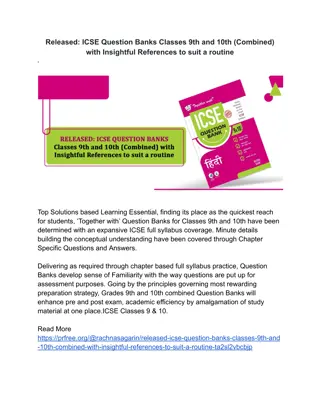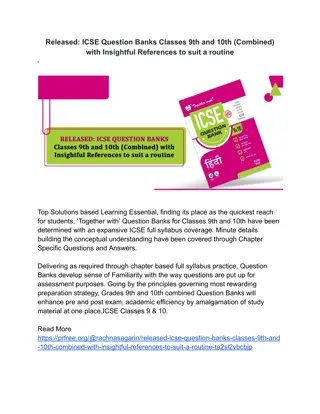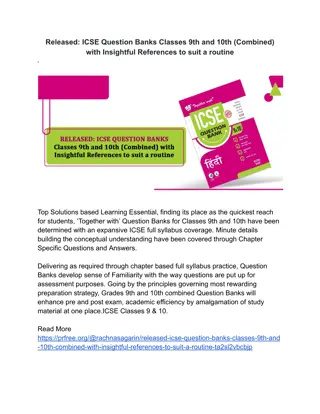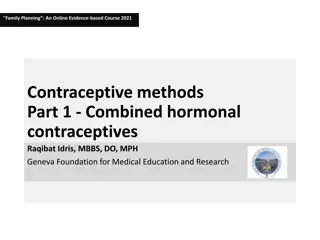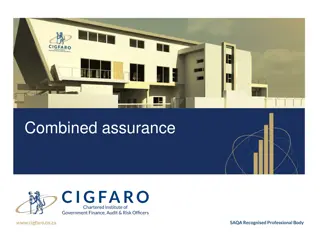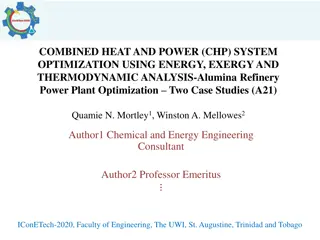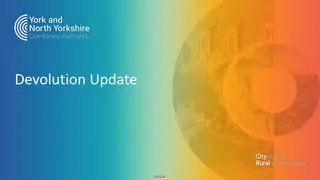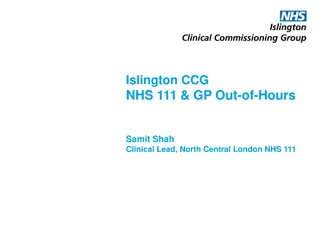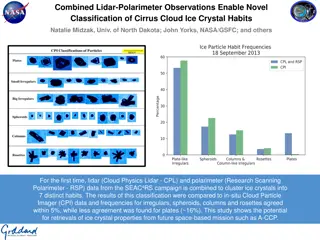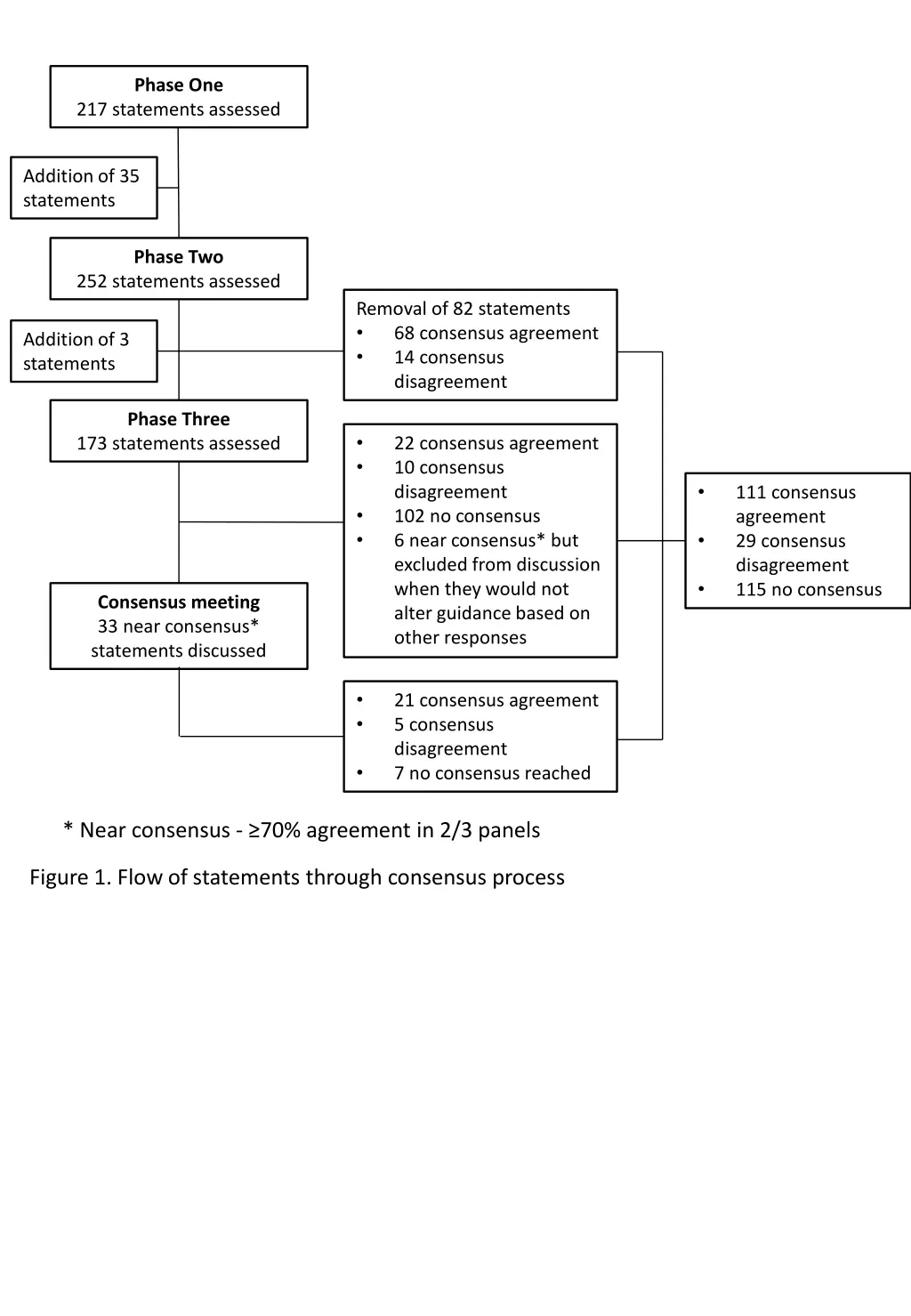
Investigation of Children with Suspected PIMS-TS Symptoms
Explore the structured assessment and diagnostic process for children presenting with Potential Multisystem Inflammatory Syndrome associated with COVID-19 (PIMS-TS). The multi-phase consensus approach details initial and secondary investigations, including blood tests, imaging, and specialist consultations. Follow the flow of statements through the consensus process and understand the criteria for determining tests during each phase.
Uploaded on | 2 Views
Download Presentation

Please find below an Image/Link to download the presentation.
The content on the website is provided AS IS for your information and personal use only. It may not be sold, licensed, or shared on other websites without obtaining consent from the author. If you encounter any issues during the download, it is possible that the publisher has removed the file from their server.
You are allowed to download the files provided on this website for personal or commercial use, subject to the condition that they are used lawfully. All files are the property of their respective owners.
The content on the website is provided AS IS for your information and personal use only. It may not be sold, licensed, or shared on other websites without obtaining consent from the author.
E N D
Presentation Transcript
Phase One 217 statements assessed Addition of 35 statements Phase Two 252 statements assessed Removal of 82 statements 68 consensus agreement 14 consensus disagreement Addition of 3 statements Phase Three 173 statements assessed 22 consensus agreement 10 consensus disagreement 102 no consensus 6 near consensus* but excluded from discussion when they would not alter guidance based on other responses 111 consensus agreement 29 consensus disagreement 115 no consensus Consensus meeting 33 near consensus* statements discussed 21 consensus agreement 5 consensus disagreement 7 no consensus reached * Near consensus - 70% agreement in 2/3 panels Figure 1. Flow of statements through consensus process
Box 1a: Initial investigation of children with suspected PIMS-TS 1. Children presenting to hospital with fever, abdominal pain, gastro-intestinal, respiratory or neurological symptoms who are not unstable and have no other clear cause for their symptoms should have the following initial blood tests performed to help to identify whether they have PIMS-TS: Full blood count*; C-Reactive Protein*; Urea, creatinine and electrolytes*; Liver function tests* Footnote: The current definition for PIMS-TS includes persistent fever as a presenting complaint. As more cases are reported this may change but currently most experts feel that PIMS-TS should only be considered in febrile children. The ongoing study by the British Paediatric Surveillance Unit will provide further details around this. If the diagnostic criteria for PIMS-TS are met and it remains a differential diagnosis, the following investigations are recommended Box 1b: Second line investigations for children with suspected PIMS-TS Haematological and biochemical investigation of children who meet the criteria for PIMS-TS 1. In addition to the tests above, children presenting with features which meet the criteria for PIMS-TS should have measurement of the following blood tests within 12 hours of admission: Blood gas and lactate**; Fibrinogen*; Ferritin*; D-Dimer*; Troponin*; N-terminal pro-B-type natriuretic peptide (NT-proBNP)**; Lactate Dehydrogenase*** 2. SARS-CoV-2 reverse transcriptase polymerase chain reaction (RT-PCR) test on an appropriate respiratory sample and SARS-CoV-2 serology* 3. Septic and viral screen* (lumbar puncture only if specifically indicated**) 4. 12 lead Electrocardiogram (ECG)* 5. Chest Radiograph* 6. Echocardiogram* 7. In children with abdominal pain who meet the criteria for PIMS-TS and require imaging, abdominal ultrasound scan should be the first-line investigation to rule out alternative diagnoses such as appendicitis.** 8. Echocardiogram is not routinely recommended for children presenting with symptoms which do not meet the criteria for PIMS-TS.** 9. Children who are physiologically unstable should have a daily echocardiogram.* 10. There is no consensus about the frequency of subsequent echocardiograms for physiologically stable children with PIMS-TS. We recommend that this is determined by a paediatric cardiologist based on the previous echocardiography findings, the clinical status of the patient and the change in blood markers of inflammation. 11. All children with coronary artery dilatation should be discussed with a paediatric cardiologist.* 12. Contrast enhanced computed tomography of the coronary vessels is not routinely recommended for children with PIMS-TS.* * determined in phase 2 ** determined in phase 3 *** determined during consensus meeting Figure 2. Investigation of children with suspected PIMS-TS
Box 2a: Classification of PIMS-TS 1. Primary classification of PIMS-TS should be based on the presenting phenotype**: a. Kawasaki-like Disease: Complete and incomplete, classified using the American Heart Association criteria. b. Non-specific: children presenting with shock and/or fever and symptoms which may include abdominal pain, gastrointestinal, respiratory or neurological symptoms which do not meet the criteria for Kawasaki Disease. Subsequent classification of severity is recommended**. Box 2b: Location of care and features of severity of PIMS-TS 1. Location of care should be determined by the severity of disease and MDT discussion will aid risk stratification for determining this. 2. Features of severe disease may be signified by the presence of any of the following factors, particularly when present in combination: Physiological features of severe disease: prolonged capillary refill time*; persistent hypotension*; persistent tachycardia*; requirement for 40ml/kg fluid bolus**; oxygen saturations less than 92% in room air* Haematological and biochemical features: significantly elevated C-Reactive Protein* (consensus reached for >300 mg/L but subsequent evidence suggests >150 mg/L); significantly elevated or rising troponin*; elevated N-terminal pro-B-type natriuretic peptide (NT-proBNP)*; elevated or rising lactate*; significantly elevated or rising ferritin*; significantly elevated or rising D-Dimer***; elevated or rising Lactate Dehydrogenase***; high or low Fibrinogen***, elevated creatinine*** Cardiac features: abnormal ECG*; coronary artery aneurysms on echocardiogram*, left ventricular failure** 3. Children with features of complete or incomplete Kawasaki Disease-like phenotype can be cared for in a District General Hospital if (1) they do not have single or multiple organ dysfunction or cardiac involvement (2) they can have an echo by a clinician with a competency to assess for cardiac involvement including coronary artery abnormalities**. 4. Escalation to a level 3 unit which has clinicians with cardiology expertise should be considered early for any child with single or multiple organ dysfunction*. 5. Children with any evidence of cardiac involvement (elevated Troponin, elevated NT-proBNP, abnormal coronary arteries on echo or contrast enhance computed tomography) should be cared for in a level 2 or level 3 unit where there are clinicians with cardiology expertise*. Box 2c: Multi-Disciplinary Team 1. Early discussion, before formal MDT, should occur for severely unwell children. 2. Every child with PIMS-TS should be discussed by an MDT within 24 hours of admission or identification of PIMS- TS if already an inpatient*. 3. Core members of the multi-disciplinary team include: paediatric Infectious Diseases/Immunologists*, AND/OR Paediatric Rheumatologists*, AND Paediatric Cardiologists*, AND Paediatric Intensivists* 4. Additional members of the multi-disciplinary team include: general paediatricians caring for children in a District General Hospital and for children with multiple co-morbidities**, paediatric emergency transport team - for children who are severely unwell in a District General Hospital at the time of MDT**, paediatric haematologists - for children with haemaglobinopathies, clotting disorders, coagulopathy or thrombosis***. Box 2d: Discharge criteria and follow-up 1. To be discharged from hospital, children who are otherwise well should have stable cardiac function* and no pyrexia for 24 hours.*** 2. Children with PIMS-TS should be followed up in the first 1-2 weeks after discharge** and have further follow- up 6 weeks after discharge*. Echocardiography should form part of this follow-up for all children with PIMS-TS. 3. Multi-disciplinary follow-up should be undertaken for children with coronary artery abnormalities** or who have required organ support due to PIMS-TS**. 4. Multi-disciplinary clinicians should include paediatric cardiology* and paediatric infectious diseases***. * determined in phase 2 ** determined in phase 3 *** determined during consensus meeting
Box 3a: Management of children with PIMS-TS and features of Kawasaki-like Disease (Complete and incomplete phenotype) 1. First line therapy for all children is IVIg at a dose of 2g/kg, calculated using ideal body weight. This can be administered in a single or divided dose depending on the clinical picture and cardiac function.* a. A second dose of IVIg may be considered for children who have not responded or partially responded to the first dose of IVIg.*** 2. All children who meet the criteria for the RECOVERY trial should be invited to participate in the first stage randomisation. 3. High risk children include those under 12 months of age* and those with coronary artery changes*. These children should receive early IV methylprednisolone (i.e. alongside IVIg)***. 4. If a child is recruited to the first randomisation in the RECOVERY trial they will be randomised between therapy and standard of care . *** 5. Second line therapy is IV Methylprednisolone$. It should be considered as the next treatment option for children who remain unwell 24 hours after IVIg infusion, particularly if they have ongoing pyrexia.* 6. Gastric Protection should be given to children on high dose steroids.* 7. Biological therapy should be considered as third line in children who fail to respond to IVIg and IV Methylprednisolone.* a. The decision to commence a biological agent should be made by a multi-disciplinary team* If a child is recruited to the RECOVERY trial they should be offered the opportunity to enter the 2nd stage interventions phase and be randomised between Tocilizumab and standard of care. Stage 1 and 2 randomisations in the RECOVERY trial can happen at the same time.*** b. c. The preferred biological agent for children not recruited to the RECOVERY trial with Kawasaki-like Disease phenotype is Infliximab.** Box 3b: Management of children with PIMS-TS and non-specific presentation phenotype 1. Indications for therapy include: Evidence of coronary artery abnormality*; Meeting the criteria for toxic shock syndrome*; Evidence of progressive disease**; Prolonged fever for >5 days** 2. First line therapy is IVIg at a dose of 2g/kg, calculated using ideal body weight. This can be administered in a single or divided dose depending on the clinical picture and cardiac function.* a. A second dose of IVIg may be considered for children who have not responded or partially responded to the first dose of IVIg.*** 3. All children who meet the criteria for the RECOVERY trial should be invited to participate in the first stage randomisation.** 4. If a child is recruited to the first randomisation in the RECOVERY trial they will be randomised between therapy and standard of care . 5. Second line therapy is IV Methylprednisolone. It should be considered as the next treatment option for children who remain unwell 24 hours after IVIg infusion, particularly if they have ongoing pyrexia.** 6. Gastric Protection should be given to children on high dose steroids.* 7. Third line therapy is a biological agent in children who fail to respond to IVIg and IV Methylprednisolone.* a. The decision to commence a biological agent should be made by a multi-disciplinary team* If a child is recruited to the RECOVERY trial they should be offered the opportunity to enter the 2nd stage interventions phase and be randomised between Tocilizumab and standard of care. Stage 1 and 2 randomisations in the RECOVERY trial can happen at the same time. b. c. Consensus was not reached on a preferred biological agent with equipoise demonstrated between Tocilizumab, Anakinra and Infliximab. The choice of biologic should be informed by the experience of the clinicians.*** 8. A small number of children within this phenotype have met the criteria for haemophagocytic lymphohistiocytosis (HLH). In these children discussion with a specialist team and awareness of the HLH-2004 guidelines is recommended.***
Box 3c: Anti-viral and antibiotic therapy 1. Children with PIMS-TS who are SARS-CoV-2 positive on rt-PCR or antigen testing, may be considered for anti- viral therapy. Remdesivir is the first-choice anti-viral therapy.*** 2. Intravenous antibiotics should be commenced in all patients. These should be focussed or stopped based on the clinical picture and culture results.* 3. Children who meet the criteria for toxic shock syndrome should receive clindamycin in addition to broad spectrum antibiotics.* 4. The initial infection screen does not have to be negative for other pathogens prior to high dose steroids being commenced***. Box 3d: Anti-platelet and anti-coagulation therapy for children with PIMS-TS 1. All children over 12 years of age should wear compression stockings. ** 2. The local Kawasaki guideline for aspirin dosing should be followed for children with Kawasaki-like Disease Phenotype.* 3. No consensus was reached over whether children with non-specific phenotype should receive high dose aspirin in specific situations. 4. Low dose aspirin should be continued for a minimum of 6 weeks in all patients with PIMS-TS. 5. Children with deranged clotting should have mixing studies performed to determine whether they are in a pro- thrombotic state.** 6. Children who have a thrombotic event should follow the local protocol for management of this.* 7. Children with abnormal coronary arteries should be discussed with a haematologist regarding long-term anti- platelet therapy and anti-coagulation. *** * determined in phase 2 ** determined in phase 3 *** determined during consensus meeting Figure 4. Management of children with PIMS-TS

